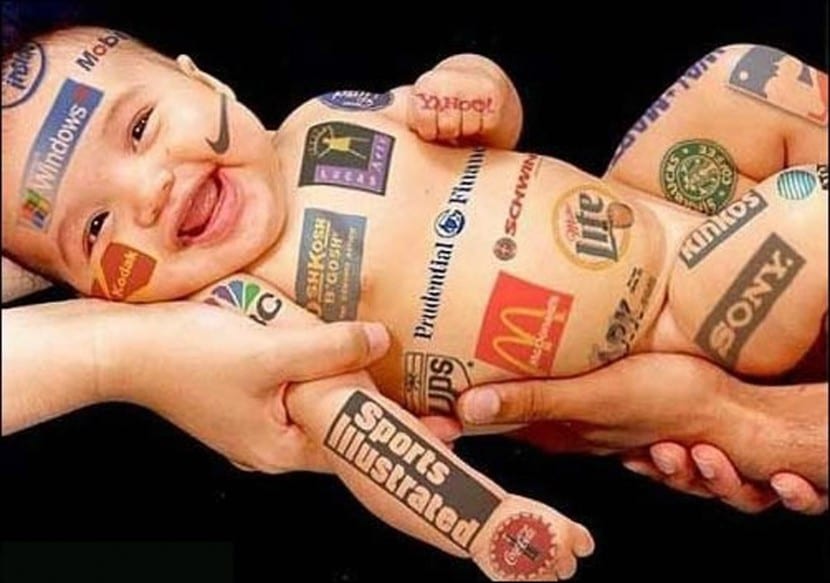
Is persuading synonymous with manipulating? To what extent are advertising strategies legal and should they be consented? How important is advertising in our environment and what consequences does it have on our social system? Today we would like to share with you a selection of four great documentaries that pay attention to nuclear points of the advertising universe.
In them you will find very interesting information about the internal process or the gestation of the advertising campaign, the history of this professional field since its birth or the moral weight that exists in its practices. Without a doubt, they pose great questions that it would be very interesting for all of us who are part of the world of marketing, design and communication to ask ourselves more often.
Consume to death
Have you never had the feeling that, in your everyday life, there is always "something" that encourages you to buy any type of product or service, even if you don't need it? This magnificent documentary is about this and other issues, in which we are clearly shown some of the strategies that the big brands use to create all those false needs in us. It is a fact that we live in an absolutely consumerist society, however that is something that we have assumed and, consequently, we ignore. But from time to time it may be a good idea to stop and think about who directs our lives, our needs and our decisions because, although advertising and marketing strategies may seem purely persuasive resources, on many occasions they condition our actions or decisions and, what worse, our perception of reality, creating false needs and turning ourselves into market puppets always in the expectation of an unattainable well-being.
50 years of spots
The first television commercial was broadcast in Spain in 1957. This documentary took advantage of this date to tell the story of television advertising based on the first commercials, which were made live and used labeled cartons from the agencies. Through historians, sociologists and advertisers we will learn how spots reflect the changes in Spanish society in the last half century. We will see the most emblematic advertisements, which will help to understand the process that led Spain to be the world leader in the creation of television advertising.
The power of advertising at the point of sale
Graphispack is the Spanish association of suppliers for the graphic industries, packaging and advertising at the point of sale. The promotional documentary, well made by ADIFA PLV and POPAI, with a script and direction by Pere Serrat and his entire team, gives a series of data and advice to today's advertiser. We are grateful when associations and institutions in Spain produce documentaries about the sector. Or your associates are able to agree and fund / sponsor docus like this.
How much does a human cost?
Do we really need the things we think we need? Is everything the media tells us true? How much is a human life worth? One way of calculating this is the one used by the lawyers of the multinational Union Carbide to fix the compensation for the victims of the Bhopal disaster in 1984. If the per capita income of India is (it was at that time) of 250 dollars while that of the United States exceeds 15.000, we can conclude that the average value of an "Indian life" is 8.300 dollars while that of an "American life" amounts to 500.000. When we calculate the value of human life we tend to resort to "expressions of money"; that is, to external accounting forms by which we try to grasp an immeasurable quantity: money, livestock, merchandise. But what is the value of money, livestock, and merchandise? As we know, David Ricardo and Adam Smith were the first to formulate in the mold of a law a relationship that all peoples accepted intuitively in their bartering and trading: that which associates the "value" of an object with a certain combination of Time and Job. Later, Karl Marx refined this formulation by substituting "labor" for "labor power" and identifying the value of a commodity with "the time socially necessary for its production." From there Marx deduced an objective and paradoxical form of exploitation, independent of the lashes and the foremen, hidden in a positive and palatable figure: the salary. Indeed, while the value comes from the invested human "labor power" in its production (which is an external "force" added to the productive processes), the value of that "force" is fixed in relation to the commodities that it has produced. But this paradox answers in some way the fundamental question: does the human being have no proper value, no autonomous value? Capitalism will recognize one: precisely its ability to "value", through the combination of time / labor, dead matter or, what is the same, to produce capitalist wealth. The "labor power" is a peculiar commodity that, far from being consumed with use, adds value to the commodities it produces. How much is a human worth? The time we have worked on it. Cheesy call that "love".
https://youtu.be/-XWD_yveGHw